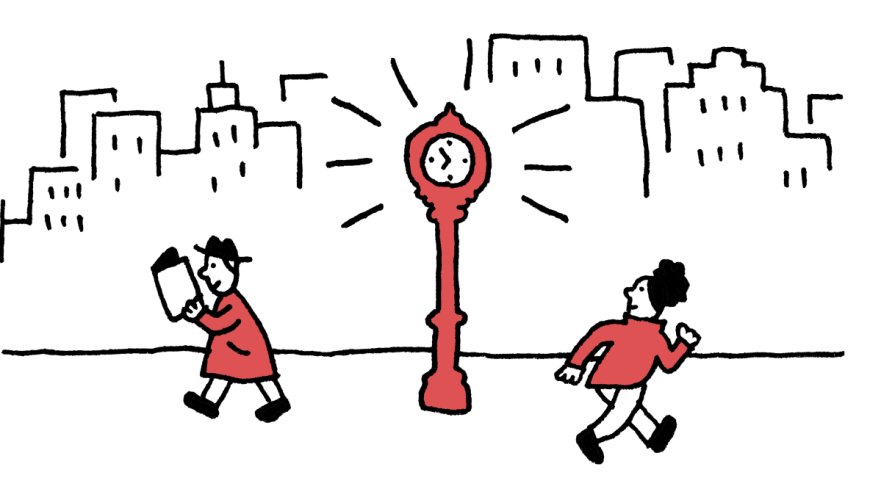Rachel Maddow on Authoritarians and Thieves
The DailyYou’re reading The New Yorker’s daily newsletter, a guide to our top stories, featuring exclusive insights from our writers and editors. Sign up to receive it in your in-box.In today’s newsletter, an insult to historians. And then:How Trump benefitted from the politics of inflationThe end of American climate leadershipA novel that captures the start of India’s Modi eraDead LastAuthoritarian rule always entails corruption. With Donald Trump in office, watch your wallet.Historians have repeatedly listed Donald Trump among the nation’s worst Presidents. And so, Rachel Maddow writes, “it says something about our respect for expertise that we decided to give the man another go.” It also says something about our national tolerance for crooks and thieves. In this week’s issue, Maddow joins a collection of writers looking outward and inward to consider what Trump’s reëlection reveals about America. Read Jia Tolentino on the gender war, George Saunders on understanding systemic rot, Jane Mayer on the coming decades for the Supreme Court, Kelefa Sanneh on white-grievance politics, Timothy Snyder on how fascism takes hold, and much more.The LedePhotograph by Martina Melzer / GettyPhotograph by Martina Melzer / GettyThe Sun Sets on U.S. Climate LeadershipJust how bad a second Trump Administration will be for climate policy remains to be seen, but the most likely scenarios are all pretty bleak. As this year’s global climate negotiating session gets underway, the U.S. has been sidelined and left without any leverage, Elizabeth Kolbert reports.More Top StoriesDonald Trump’s Victory and the Politics of InflationA Début Novel Captures the Start of India’s Modi EraThe Morning After at the White HouseDaily CartoonCartoon by Brendan LoperCopy link to cartoonCopy link to cartoonLink copiedShopShopMore Fun & GamesPlay today’s challenging puzzle. A clue: People born a year after Rats. Four letters.P.S. The Cathedral of Notre Dame, in Paris, rang its bells on Friday, the first time since a devastating fire consumed much of the structure’s roof, in 2019. The cathedral is scheduled to reopen next month, after a restoration process that recreated its famous spire. For a while, though, there had been a push to consider a more ambitious modern redesign for a building that has been repeatedly altered during its long history to reflect changes in mood and aesthetics. As Thomas de Monchaux writes, architecture “has the seeming power—perhaps alone among the arts, perhaps uniquely in human endeavor—to give you the past you wish you had.”

In today’s newsletter, an insult to historians. And then:
- How Trump benefitted from the politics of inflation
- The end of American climate leadership
- A novel that captures the start of India’s Modi era
Dead Last
Authoritarian rule always entails corruption. With Donald Trump in office, watch your wallet.
Historians have repeatedly listed Donald Trump among the nation’s worst Presidents. And so, Rachel Maddow writes, “it says something about our respect for expertise that we decided to give the man another go.” It also says something about our national tolerance for crooks and thieves. In this week’s issue, Maddow joins a collection of writers looking outward and inward to consider what Trump’s reëlection reveals about America. Read Jia Tolentino on the gender war, George Saunders on understanding systemic rot, Jane Mayer on the coming decades for the Supreme Court, Kelefa Sanneh on white-grievance politics, Timothy Snyder on how fascism takes hold, and much more.
The Lede
The Sun Sets on U.S. Climate Leadership
Just how bad a second Trump Administration will be for climate policy remains to be seen, but the most likely scenarios are all pretty bleak. As this year’s global climate negotiating session gets underway, the U.S. has been sidelined and left without any leverage, Elizabeth Kolbert reports.
- Donald Trump’s Victory and the Politics of Inflation
- A Début Novel Captures the Start of India’s Modi Era
- The Morning After at the White House
Daily Cartoon
P.S. The Cathedral of Notre Dame, in Paris, rang its bells on Friday, the first time since a devastating fire consumed much of the structure’s roof, in 2019. The cathedral is scheduled to reopen next month, after a restoration process that recreated its famous spire. For a while, though, there had been a push to consider a more ambitious modern redesign for a building that has been repeatedly altered during its long history to reflect changes in mood and aesthetics. As Thomas de Monchaux writes, architecture “has the seeming power—perhaps alone among the arts, perhaps uniquely in human endeavor—to give you the past you wish you had.”
















































